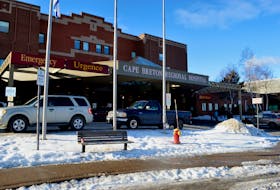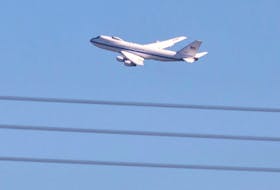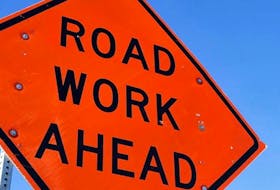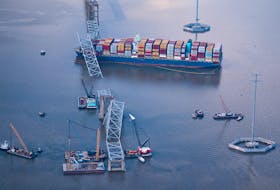AMHERST, N.S. – How do firefighters keep battle-ready when there are no fires to fight? They get the fire delivered to them.
“Practice in any method is always extremely important for a fire department. We’re just providing a means to have live fire in their backyard, which you don’t get every day,” said Everett Hiltz. “Everybody that’s here has been through basic training, and the whole point of us being here is to refresh those skills and make sure those skills are at the forefront of their brain if they do get a structure fire.”
Hiltz is the senior instructor with the Nova Scotia Firefighter School, and manages their off-site, mobile burn unit trailer.
The trailer was in Amherst for six days, from Wednesday, Oct. 19, to Monday, Oct, 22.
“It’s a 53-foot trailer. The second level folds down and collapses for transport,” said Hiltz, who is also the chief of the Chester Fire Department.
The trailer can get like an oven inside, reaching temperatures of 175 C.
“There’s three fire places on the floor, as well as the fixed-prop on the ceiling that lets us simulate a rollover condition inside a structure,’ said Hiltz.
What is a rollover?
“What’s happening inside a fire is, as our fire burns, the smoke, which is unburned fuel, will stay inside the structure and that smoke starts to burn itself,” said Hiltz. “That burning smoke is called rollover, and we simulate that.”
In Amherst, Hiltz was running the simulations at about 95 C. He says those temperatures aren’t too bad as long as you wear good bunker gear.
“You can buy cheap-made bunker gear or you can put good money into good bunker gear that withstands those temperatures better,” said Hiltz. “In the case of firefighting equipment, it’s money well spent.”
The fire-fighting trailer has travelled throughout the Maritimes since 2000 training hundreds of firefighters each year.
“We start off the week doing a refresher on our equipment and doing some search-with-smoke conditions, rescuing victims and doing proper victim carries and drags,” said Hiltz. “Then we transition into our direct, indirect and combination fire attacks,”
The Amherst firefighters finished the week practicing evolutions, whereby the firefighters run their own drills.
“We give them very generic information like they get on a fire call, to which we have someone set up a command position and they run the radios and handle the scene,” said Hiltz.
The drills are based on real-life scenarios.
“A lot of the evolution based stuff is from calls I’ve been on myself or told about from firefighters from around Nova Scotia, both career and volunteer firefighters,” he said.
He said the Amherst firefighters did a really good job.
“It’s a good group here.”
He also said, depending on the region, there are less fires today than there were in 1999, when he first started firefighting.
“I find we’re doing more medicals and vehicle collisions now than fires, and that’s not so bad,” said Hiltz. “That means that departments are having an impact with fire prevention on the younger generation, with things such as checking fire detectors.”








